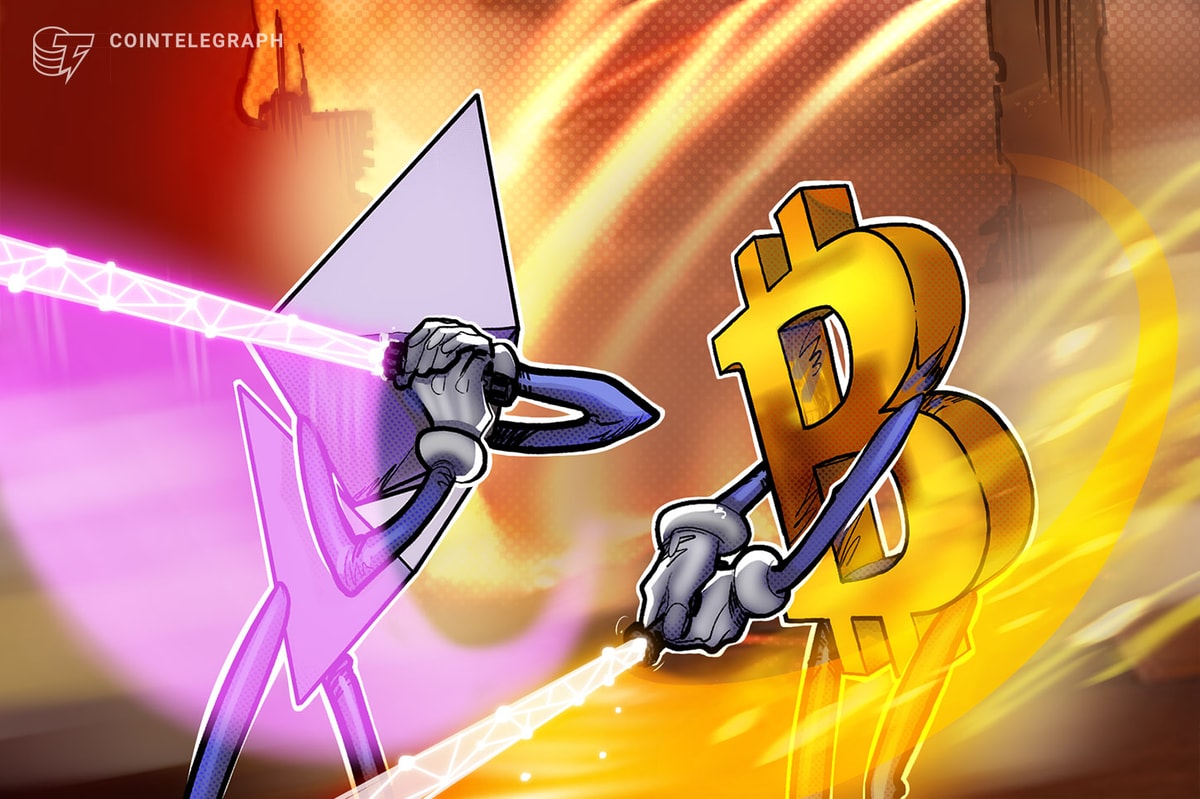Ethereum researcher Justin Drake says ETH issuance will decrease while the Bitcoin network will eventually be hampered by its supply cap, leading to debate on X.
News
Ethereum Foundation researcher Justin Drake argues Ether will become “ultra sound” money “soon enough” as its issuance decreases, while its competitor, Bitcoin, is “cooked” as it moves closer to its 21 million supply cap — sparking debate between the two communities.
Drake said in a Feb. 5 X post that for Ether (ETH) “to become ultra sound again, either issuance has to decrease or the burn has to increase.”
“I believe both will happen,” he said.
Ethereum issuance became deflationary after the Merge in 2022 but started to increase in April 2024 following the Dencun upgrade, which reduced fees for layer-2 networks and the overall amount burned.
However, Drake compared ETH’s issuance with that of the Bitcoin blockchain, finding that Bitcoin added 655,000 Bitcoin (BTC) to supply since the Dencun upgrade, compared to 462,000 Ether added to the Ethereum network during the same period. That Bitcoin is worth around $63.5 billion at current prices, while the Ether is worth just $1.25 billion.
“Today BTC supply grows 0.83% per year, 66% faster than ETH,” Drake said.
ETH and BTC issuance since Ethereum’s Merge: Source: ultrasound.money
Drake said that the Bitcoin blockchain’s 21 million supply cap could lead to long-term security risks, as miner revenue mostly comes from block rewards — around 99%, compared to just 1% from network fees over the past week. He added that Bitcoin was vulnerable to security risks due to the relatively low cost to attack the network.
“The Bitcoin blockchain is cooked. It takes roughly $10 [billion] and access to 10 [gigawatts] to permanently 51% attack Bitcoin. The cost is peanuts for nation-states.”
“It’s utterly insane to me that Bitcoiners still don’t see the obvious catastrophe headed their way,” added Ethereum educator Anthony Sassano.
Bitcoiners bite back
However, analyst James Check told Cointelegraph that critics of Bitcoin’s sustainability fail to account for considerations such as energy advancements, mining efficiency and economic incentives.
If Bitcoin reaches reserve status, high fees are inevitable, similar to how institutions pay to store gold securely, he said.
The cost of ASIC mining rigs, which determine profitability, is also overlooked. Bankrupt miners sell rigs at lower prices, allowing new entrants to continue mining and keeping the network secure.
Over time, network fees will sustain operational costs while the subsidy has already covered capital expenditures, he added.
Check also argued that advancements in energy sources, especially nuclear power and wasted energy utilization, will reduce mining costs.
He claimed mining stabilizes energy grids through demand response, reducing maintenance costs for operators. Some grids may eventually find it efficient to mine Bitcoin as a loss leader, he said.
“This topic is very complex, but I am of the view that arguments against Bitcoin’s sustainability have not considered the deeper picture. It is a multivariate problem, and one I am quite constructive on long term,” Check said.
“Justin [Drake] is claiming that plugging in and running a small country’s worth of power is a cheap and easy exercise. One cannot begin to quantify how unserious this claim is.”
Related: ‘The worst thing that happened to Ethereum’ — Bitcoin up 160% since the Merge
Meanwhile, Drake acknowledged that Ethereum has its own problems, such as the incentivizing of excessive staking, which displaces ETH as “pristine” collateral. He also said it has systemic risks with liquid staking platforms such as Lido.
He proposed a “Croissant Issuance” model, which is a declining supply issuance that drops to zero when 50% has been staked and a peak issuance capped at 1% per year to allow market-driven equilibrium.
Croissant Issuance model. Source: Justin Drake
Magazine: XRP to $4 next? SBF’s parents seek Trump pardon, and more: Hodler’s Digest
This article first appeared at Cointelegraph.com News


